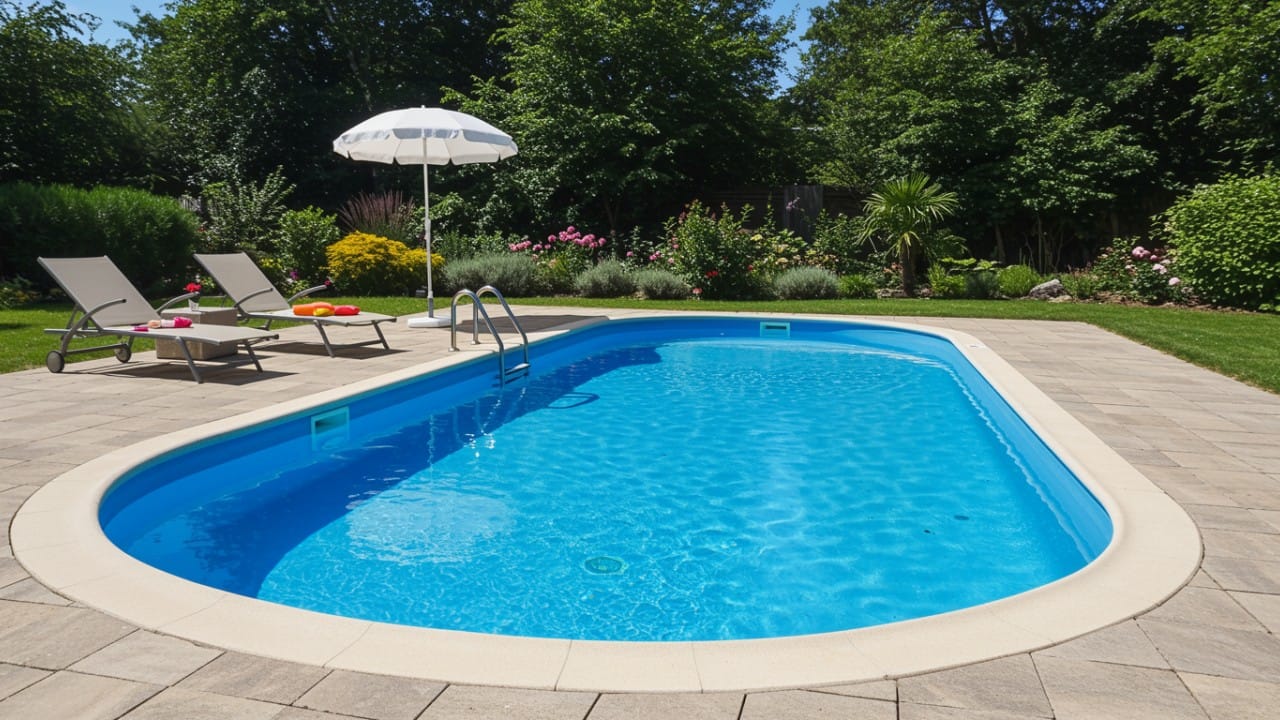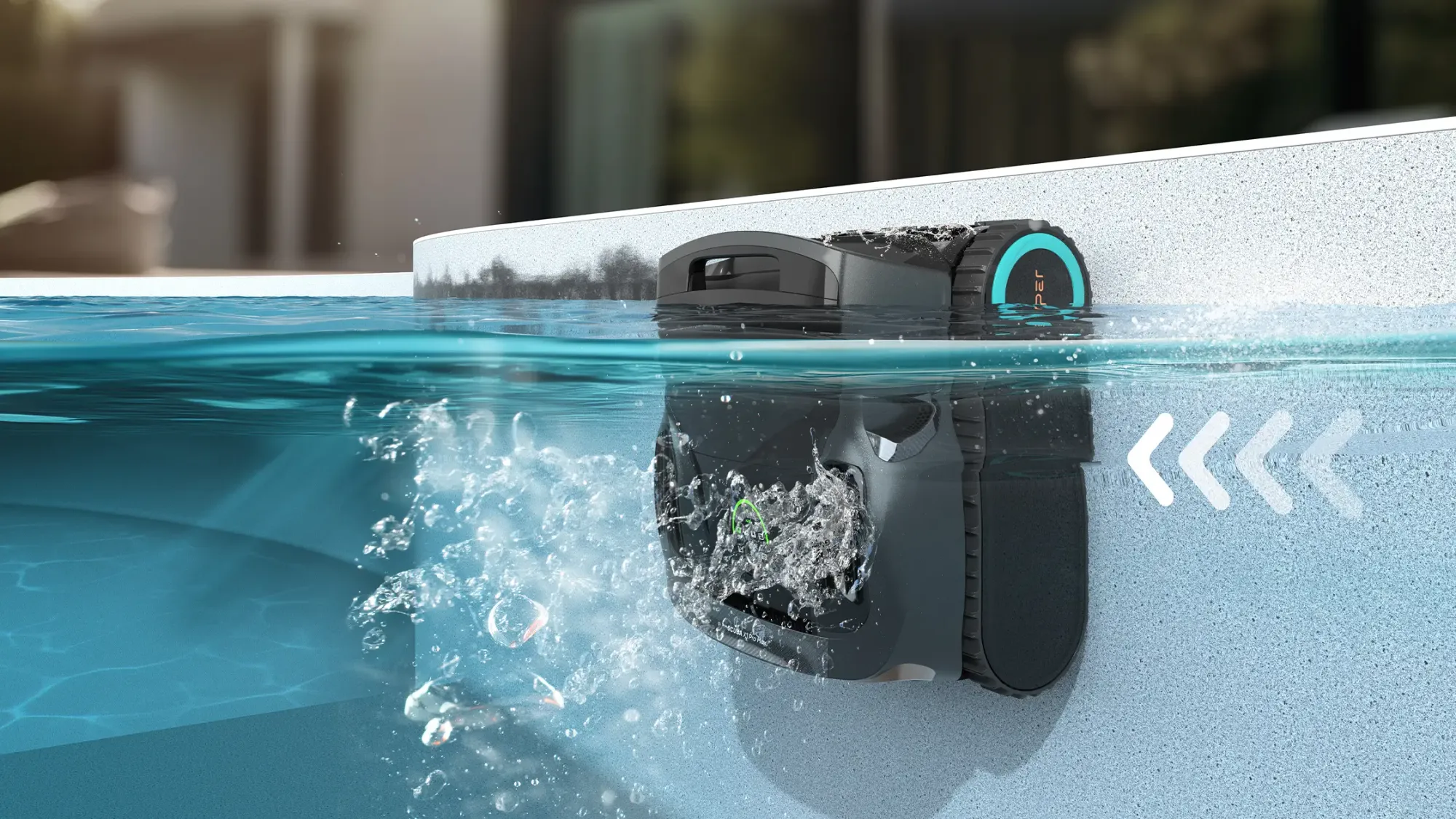How to Remove Pool Stains Without Draining: The Complete DIY Guide

Draining your pool sounds like a quick fix. But it’s not. You waste so much water. Then you pay again to fill it up. And sometimes an empty pool can even crack. In Australia, wasting water like that isn’t smart.
The good thing is, you don’t have to drain it. You can clean the stains while the pool stays full, saving a significant amount of water and reducing your environmental footprint.
Here’s a simple guide to removing pool stains without draining. We’ll show you two safe ways that really work.
Step One: Find Out What Kind of Stain You Have
Not every stain is the same, but identifying them is simple. Some come from leaves, dirt, or dead bugs. Those are called organic stains. Others come from metals dissolved in your water, such as iron or copper. Those are metal stains.
Organic stains look messy, kind of brown or green, and not even in shape. You might see them under trees or where stuff sits too long.
Metal stains appear rusty, blue-green, or black, often near ladders or along the waterline.
Here’s a little test you can do right now:
Take one Vitamin C tablet, the same one people take when they’re sick. Put it right on the stain and wait about a minute.
If it fades, that’s a metal stain. If nothing happens, that’s an organic stain.
Quick colour hints:
| Colour | Type |
|---|---|
| Rusty brown | Iron (metal) |
| Blue-green or black | Copper (metal) |
| Dark purple or black | Manganese (metal) |
| Brown or green blobs | Leaves or algae (organic) |
Method 1: Cleaning Organic Stains (No Draining Needed)
Organic stains are easier to handle. Here’s how you fix them:
Brush the area.
Use a stiff pool brush and scrub the stain firmly.
Spot-shock the stain.
If you have a concrete pool, sprinkle a bit of granular pool shock directly on the stain.
For vinyl or fibreglass pools, dissolve the shock in water and pour it using a PVC pipe to keep it off the liner.
The strong chlorine burns off the organic buildup.
Run the filter.
Let your pump run for at least 8 hours after treatment to mix everything and clear the water faster.
Try not to overdo the chlorine. It is crucial not to overdo the chlorine. In line with NSW Health guidelines on water safety, free chlorine levels should remain between 0.1 mg/L and 4 mg/L. Ensure you return to this safe range immediately after your treatment is complete to protect your surfaces and bather safety.
Method 2: Removing Metal Stains (Ascorbic Acid / Vitamin C)
Instead of using chlorine, which sets metal stains, treat them with ascorbic acid. This product works by gently lifting the metals from the surface.
- Balance your pH: Lower it to about 7.0-7.2 with a pH reducer to help the acid do its job.
- Add Ascorbic Acid: Sprinkle a little on small spots.
For big ones, mix and spread it.

Wait a bit, stains will fade.
- Run your pump: Keep filtration on to help circulate the acid and move the dissolved metals into the water.
- Add a sequestering agent: This part is vital. The acid releases the metals, but they stay in the water. A sequestering agent grabs those metals so your filter can trap them. Add it as soon as you see the stain lifting.
Be careful. Wear gloves, don’t mix stuff, and avoid the fumes. Following these safety precautions will ensure a secure and comfortable stain removal process.
Stay Safe: Three Big Mistakes to Avoid
- Don’t add chlorine right after using acid. Wait at least 24-48 hours.
- Don’t pour two chemicals together. Always add them one by one.
- Wear gloves and goggles. Keep the area open for air flow.
These simple steps protect you and keep your pool surface safe.
A Real Example: Rust Near the Ladder
Here’s a true-to-life story. A pool owner in Queensland noticed reddish stains spreading near the ladder bolts. They followed the ascorbic acid method. First, they dropped the pH to 7.1. Then they added 1 kilogram of ascorbic acid and brushed lightly. Within two hours, the rust faded completely.

They added a sequestering agent right after, which kept the iron from coming back. If you could see it, one side of the pool floor looked rusty, the other side spotless. Simple but effective.
FAQ: Quick Answers to Your Pool Stain Questions
Q: Is Vitamin C safe for vinyl pools?
Yes, it’s mild and safe for all types: vinyl, fibreglass, and concrete. Just rebalance your pH once you’re done, since ascorbic acid can lower it. It's crucial to bring it back to the recommended range of 7.2-7.6 to ensure swimmers' safety and comfort.
Q: When can I swim again?
For organic stains, once chlorine is back to 1–3 ppm.
For metal stains, wait a day until the pH and chlorine are balanced again. Once the pH is back to the recommended range of 7.2-7.6 and the chlorine level is between 1-3 ppm, it's safe to swim again.
Q: Why do my stains come back?
If the metal source isn’t removed or you skipped the sequestering agent, the stains can return. The sequestering agent is crucial because it binds metals, allowing them to be filtered out and preventing stains from reappearing.
Q: Does Aiper make stain removers?
Aiper’s focus is prevention. Our robotic cleaners keep out leaves, algae, and other debris —the usual culprits of organic stains. For metal stains, use Vitamin C and a sequestering agent.

Keep It Clean
What's the best way to fix rust stains? Don’t let them start. Keep pH steady and metals in check.
And if you want to keep leaves and gunk from ever settling? Let a robotic pool cleaner do it for you. It scrubs, vacuums, and keeps your water clean, so stains never get a chance to form.
No draining, no stress. Just clear, blue water all season long.

